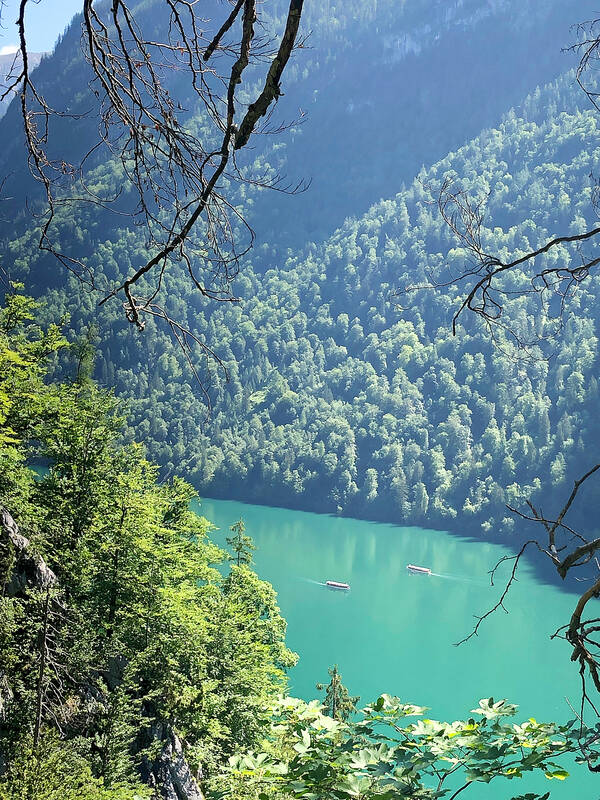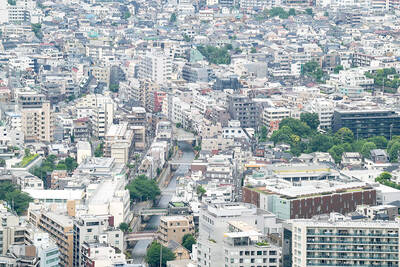The punch that floored Joseph Brandner, 34, at 11.30pm on Aug. 24 was the start of it all. Three men wearing Division Deutschland T-shirts, a brand associated with neo-Nazis, had walked up behind him as he was enjoying a drink with friends at a beer table outside the Kuckucksnest bar in the Bavarian alpine town of Berchtesgaden.
Brandner — who has been learning-disabled since being hit by a car at the age of 17 — was sucker-punched to the ground. “Wankers!” screamed his tattooed assailant. “Come on — three on three.”
Brandner’s two friends, including the owner of the bar, Jakob Palm, 33, hurriedly picked him up and took him inside. Two of the attackers were found later by police. The men, in their 20s and 30s, were visiting from northern Germany. The slow wheels of justice continue to grind.

Photo: AP
It was a traumatic episode, the sort of random violence not experienced in this quiet conservative community of 8,000 people for many years, but it was also a moment of epiphany for Palm and others.
A video of Palm describing what happened has been viewed 15,000 times on Instagram. A meeting of about 40 concerned people was held at the Kuckucksnest and a resolution was made. “I think it’s very important to say: ‘You don’t get this village back — this historical spot is gone for you forever,’” said Palm, a father of a four-year-old son and two-year-old twin daughters, speaking of the birth that day of a citizens’ initiative known as Berchtesgaden Against the Right. The punch of Aug. 24 burst “the bubble” of Berchtesgaden’s complacency, Palm said.
“The fact that many people from relevant rightwing circles are making pilgrimages to Obersalzberg again today is a thorn in the side of many in the Berchtesgaden valley basin,” a website set up by the initiative says. “Our goal is to take a clear stand for a democratic and cosmopolitan society in times of rightwing extremist activities and attacks.”

Photo: EPA-EFE
It is inevitable that Berchtesgaden, the chocolate-box pretty town high in the German alps, will be for ever associated with Adolf Hitler. He first came to the Obersalzberg, the mountainside area above Berchtesgaden, in 1923, and went on to buy Haus Wachenfeld, a modest chalet that would be steadily expanded as his power grew.
By 1936, the Berghof, as it was renamed, was the German Fuhrer’s second seat of power after Berlin, amid a complex of private and government buildings where he spent a quarter of his time as chancellor.
Hitler’s closest acolytes, Martin Bormann, Albert Speer, Hermann Goring, requisitioned or built neighboring homes. It was at the Berghof that Hitler hosted Lloyd George, Neville Chamberlain and the former King Edward VIII and his wife, Wallis Simpson.
From its “great room,” overlooking the snow-capped Untersberg massif, Hitler launched the invasion of Poland in September 1939, plotted Operation Barbarossa against the Soviet Union and executed the siege of Leningrad at the cost of the lives of 800,000 of its inhabitants.
Hitler’s sister Paula, who died in 1960 at the age of 64, is buried in Berchtesgaden’s cemetery but little else remains of that dark chapter in history. The Berghof was damaged in a British air raid on 25 April 1945 and burned down by the Obersalzberg SS a few days later. The postwar US military government ordered the ruins to be blown up in 1952 to avoid it becoming a shrine, with fast-growing trees planted over them. A foundation wall is all that remains today.
It has, however, always been a place of pilgrimage for some — and the numbers appear to be on the rise.
The Dokumentation Obersalzberg, a museum 300 meters from the Berghof site, reopened in October after a €30 million (NT$1.01 billion) expansion with the express intent of contrasting the idyllic surroundings to the crimes ordered here.
On its opening day, one visitor scrawled in the visitors book: “Das ist das wahre Deutschland stolz national’“ (This is the real Germany, proudly national).
Lena Thurnhausstatter, 25, an education officer at the museum, said it was not a daily occurrence but that she had collected Post-it notes in the last few days daubed with antisemitic comments. They had been stuck to the museum’s “participation wall.” Some of them referenced the war between Israel and Hamas.
All this comes at a time when far-right views are on the ascendancy across Germany, with the anti-immigration Alternative fur Deutschland party boasting continued electoral success. Local center-right parties have also played with extremist language. The accommodation of asylum seekers in local hotels has provoked concerns.
“It has never been broken,” said Norbert Egger, 67, of the hold of far-right views on some parts of German society. The old prejudices were never far from the surface, he claimed, noting that the golf club near the Berghof, of which Egger has been chair in recent years, had been established in 1955 on 20 April — the day of Hitler’s birthday.
A protest rally was organized by the initiative in September. About 300 people marched through Berchtesgaden’s cobbled streets and were addressed in solidarity by the mayor, Franz Rasp, of the center-right Christian Social Union party (CSU). A night-time vigil was held in November for victims of the 1938 Kristallnacht pogroms. Further events were planned for Hitler’s birthday, including “a human chain” of people holding hands from one end of the town to the other, said Michael Gruber, 25.
More immediately, in the next few days, a first step will be made to rename Von Hindenburg Allee, a central street in Berchtesgaden named in 1933 after the-then German president in honor of his decision to make Hitler chancellor.
Palm’s great-grandfather was the mayor responsible, under duress, for making Paul von Hindenburg and Hitler “honored citizens.”
“As a family we all want that decision denounced [by the regional parliament] and for the street to be renamed,” he said. That it remains as it is is seen as evidence of a dangerous ambivalence.
“We are late but it is never too late to fight for democracy,” said Anna Stangassinger, 22.
The purpose is not only to dissuade unwelcome visitors but to ask all those who hold what may be unpalatable views to some to draw a line at violence. Palm said: “The answer to the country’s problems isn’t going back to nazism — it doesn’t get better with iPhones.”
Egger, a retired businessman who served in the air force “with the old Nazis as commanders and the young Nazis as colleagues,” said the cross-party effort offered hope that Germany could reject the poison of the past.
“From my point of view, in our risky situation in Germany, in contrast to 1933, all democrats have to work together against fascists,” he said. “We missed that in Germany 90 years ago but we shouldn’t make the same mistake again.”

The canonical shot of an East Asian city is a night skyline studded with towering apartment and office buildings, bright with neon and plastic signage, a landscape of energy and modernity. Another classic image is the same city seen from above, in which identical apartment towers march across the city, spilling out over nearby geography, like stylized soldiers colonizing new territory in a board game. Densely populated dynamic conurbations of money, technological innovation and convenience, it is hard to see the cities of East Asia as what they truly are: necropolises. Why is this? The East Asian development model, with

June 16 to June 22 The following flyer appeared on the streets of Hsinchu on June 12, 1895: “Taipei has already fallen to the Japanese barbarians, who have brought great misery to our land and people. We heard that the Japanese occupiers will tax our gardens, our houses, our bodies, and even our chickens, dogs, cows and pigs. They wear their hair wild, carve their teeth, tattoo their foreheads, wear strange clothes and speak a strange language. How can we be ruled by such people?” Posted by civilian militia leader Wu Tang-hsing (吳湯興), it was a call to arms to retake

Desperate dads meet in car parks to exchange packets; exhausted parents slip it into their kids’ drinks; families wait months for prescriptions buy it “off label.” But is it worth the risk? “The first time I gave him a gummy, I thought, ‘Oh my God, have I killed him?’ He just passed out in front of the TV. That never happens.” Jen remembers giving her son, David, six, melatonin to help him sleep. She got them from a friend, a pediatrician who gave them to her own child. “It was sort of hilarious. She had half a tub of gummies,

The wide-screen spectacle of Formula One gets a gleaming, rip-roaring workout in Joseph Kosinski’s F1, a fine-tuned machine of a movie that, in its most riveting racing scenes, approaches a kind of high-speed splendor. Kosinski, who last endeavored to put moviegoers in the seat of a fighter jet in Top Gun: Maverick, has moved to the open cockpits of Formula One with much the same affection, if not outright need, for speed. A lot of the same team is back. Jerry Bruckheimer produces. Ehren Kruger, a co-writer on Maverick, takes sole credit here. Hans Zimmer, a co-composer previously, supplies the thumping